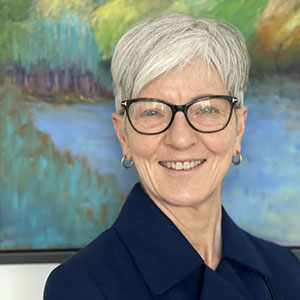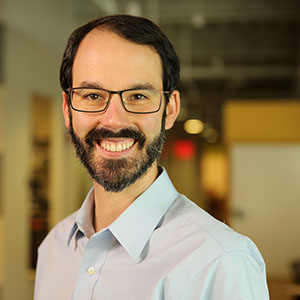For the first time, a group of major foundation leaders has agreed to experiment with a set of best practices and policies to combat the “starvation cycle” that undercuts the effectiveness of their grantees.
“We foundation leaders have refused to engage on this topic for decades,” said Ford Foundation President Darren Walker. “Now we have engaged because we have a responsibility to put forward solutions. That’s a breakthrough.”
The presidents and staffs of five leading U.S. foundations have recognized a menu of approaches to address chronic underfunding of nonprofits’ indirect costs. These include capabilities essential to achieve impact, such as executive leadership, information technology, strategic planning, and knowledge management. The menu signifies a shift from talk to action in the long-running debate over nonprofit underfunding.
Grant Terms Defined
- Direct costs: Expenses directly attributable to a specific project.
- Indirect costs: Expenses not directly tied to a specific project but shared across multiple projects. Indirect costs are essential and inextricably tied to a nonprofit’s ability to accomplish its goals.
- Overhead: Generally understood as administrative costs. Not an adequate substitute for the term “indirect costs,” which is more expansive.
- Indirect-cost rate: Total indirect costs expressed as a percentage of total direct costs.
- Fair share: Expense reimbursement for a proportional share of indirect costs associated with a project. Draws on the broader body of economic literature related to joint cost allocation.
The presidents of the Ford, Hewlett, MacArthur, Open Society, and Packard Foundations reached out by letter to a small group of peer philanthropists, inviting them to help advance the work toward solutions. The letter described their findings: “As a result of our collaboration and learning, we are convinced that today we have a problem in the way we fund nonprofits.” [1] Among a sample of their own U.S. grantees, the funders learned that the verified indirect costs exceeded what the foundations actually paid by an average of 17 percentage points.[2] (See “Grant Terms Defined.”) The financial distress caused by this underfunding emerged as a theme in interviews with leaders of 52 nonprofits.
The presidents identified project grants, which represent more than three-quarters of U.S. foundation giving and nearly all government funding globally, as the source of most of this underfunding.[3] While project grants are an essential tool in philanthropy, they routinely discount the core administrative and operational costs of delivering programs and services. In their letter, the presidents acknowledged project grants “do not cover the actual costs of those very organizations we are trying to support.”
Limits on indirect-cost reimbursement are not new. The RAND Corporation’s seminal 1986 report on the topic noted foundations’ “unpredictable support of indirect costs.”[4] By the early 2000s, many institutional funders had written policies that capped funding for grantees’ indirect costs. Concurrently, a number of organizations, such as the Urban Institute and the Nonprofit Finance Fund, took up the cause of fuller funding for indirect costs. The Bridgespan Group’s 2009 article “The Nonprofit Starvation Cycle” gave the widespread underfunding problem a memorable name that still resonates a decade later.[5]
For their part, the five presidents sought empirical evidence of how limits on indirect-cost reimbursement cause harm and for whom. Hewlett Foundation President Larry Kramer framed the task ahead for the collaborative: “Knowing that there is a general problem is not enough. How do we know which nonprofits are not recovering their actual costs — and how do we know what amount they should be receiving?”
"Knowing that there is a general problem is not enough. How do we know which nonprofits are not recovering their actual costs - and how do we know what amount they should be receiving?"
The ensuing analysis of the grant portfolios of the 15 largest foundations by asset size (including the presidents’ five institutions) revealed a correlation between the chronic underfunding of project grants and financial weakness that limits a nonprofit’s impact. Seeing that correlation in their own grantees “fundamentally changed the conversation” from defining the problem to taking action and testing solutions, said Chris Stone, the Open Society Foundations’ president at the time. (Patrick Gaspard succeeded Stone as president in January 2018.)
Making the shift to taking action, however, was not easy. The presidents represent institutions with distinct grant-making philosophies and approaches (see “The Collaborative: Five Foundations” below). Some provided more general operating support while others used predominantly project funding. Within project funding, some relied on program-officer discretion in deciding an indirect-cost rate, and others had clear-cut flat-rate reimbursement policies. Regardless, given a fixed grant-making budget, program officers understood that paying grantees more to cover actual costs could mean funding fewer organizations.
Against this backdrop, the search for changes in practice took the funder group on a “learning journey” that progressed in three phases:
- Establishing a shared understanding of the problem. Financial data from their own grantees plus hundreds of other nonprofits provided unambiguous evidence of a systemic funding problem.
- Articulating guiding principles. The group agreed to a set of principles that guided their assessment of options to appropriately reimburse underfunded indirect costs.
- Exploring multiple solutions. The diversity of funder and grantee contexts demanded a menu of solutions — not one-size-fits-all.
The presidents set an ambitious long-term goal: broadly applicable solutions to the systemic problem they called insufficient cost recovery. “As funders, we bear responsibility for the state of this funding ecosystem. It is only by working together that we are able to advance solutions that work beyond the walls of any one institution,” observed Ford’s Walker. Progress will not be easy. Real change in deeply rooted attitudes and practices will take patience and perseverance, and the collective effort of funders, nonprofits, financial intermediaries, and field builders.
"As funders, we bear responsibility for the state of this funding ecosystem. It is only by working together that we are able to advance solutions that work beyond the walls of any one institution."
While careful to say that they don’t have all the answers, the presidents’ unprecedented agreement to experiment with a range of solutions and seek meaningful change for the sector is a direct result of their work together.
Establishing a Shared Understanding of the Problem
Project grants with limits on indirect costs dominate not just in the United States, but globally. Over half of the 15 largest U.S. foundations by endowment have a flat-rate indirect-cost reimbursement policy of 15 percent or less.[6] While state and local governments granting federal money are supposed to provide a minimum reimbursement rate of 10 percent, actual indirect-cost allowances are often lower and sometimes nonexistent.[7] Many global funders also restrict grants to projects and tend to limit indirect-cost reimbursement to between 5 percent and 8 percent.[8]
“Chronic underfunding of indirect costs is a serious problem everywhere — not just in the United States,” said Open Society Foundations’ Gaspard. “Many funders — from multilateral funders in Europe to private philanthropies in Southeast Asia — rely on low flat rates that hollow out the very civil society we seek to strengthen.”
Historically, flat-rate indirect-cost policies grew out of U.S. government policy in the post-World War II era.[9] Today, foundations continue to gravitate to flat-rate reimbursement to simplify the grant-making process. At most institutions, the program officers who steer grant-making decisions are experts in a particular subject area, not nonprofit finance. Practically speaking, they frequently don’t have the time or expertise to calculate indirect-cost rates for each grantee; neither are they equipped to verify calculations submitted by grantees.
A number of organizations have worked on solving the systemic underfunding problem for years, including Independent Sector, the Nonprofit Finance Fund, the RAND Corporation, and the Urban Institute (see “Three Decades of Work on Cost Recovery” above). GuideStar, BBB Wise Giving Alliance, and Charity Navigator launched the Overhead Myth campaign in 2013 with an open letter to donors advocating an end “to the false conception that financial ratios [low overhead rates] are the sole indicator of nonprofit performance.”[10] Continuing in that vein, Philanthropy California, an alliance of the California-based regional associations of grant makers, launched the Full Cost Project in 2015 in partnership with the Nonprofit Finance Fund to change perceptions regarding the types of capital needed by organizations to deliver on their missions and be sustainable.[11] The Full Cost Project champions a more holistic set of funding needs beyond coverage of actual costs, including financing of working capital and fixed-asset investments. To this end, the initiative seeks to help funders and nonprofits better understand and communicate about “what it actually costs to run effective organizations that achieve their intended goals.”[12].
"Chronic underfunding of indirect costs is a serious problem everywhere - not just in the United States."
To get a more detailed picture of nonprofits’ actual cost of operations, Bridgespan in 2016 examined the financial records of 20 well-known nonprofits and NGOs and found the group’s median indirect-cost rate was 40 percent, nearly three times the 15 percent rate that many foundations provide (see “Research Hits Home” below).[13] A year later, in conjunction with the presidents’ collaborative, Bridgespan replicated that analysis with a small set of the collaborative’s grantees and found a similar pattern. We then analyzed the financial health of the most frequently cofunded nonprofits (many are household names) among the top 15 U.S. foundations, including the five in this collaborative. More than half of the nonprofits showed significant signs of financial stress, such as chronic budget deficits and fewer than three months of liquid reserves to cushion financial shortfalls.
Interviews with more than 300 foundation employees and nearly 180 nonprofit leaders across five continents underscored the harsh reality of the data. Grantees frequently voiced concerns that project grants leave their nonprofits scrambling to cover the gap between funding and actual costs. “Even when grants include funding for indirect costs, the amount provided is still below what it costs us,” said the executive director of a civil-society think tank in Bangladesh. “It’s increasingly a challenge to underwrite our core, and if we don’t have the core, then we can’t implement projects.”
Inequity across grantees emerged as another disturbing research finding. Some grantees achieve full cost recovery but most do not, and the difference is unrelated to impact. (A highly effective nonprofit may also be highly underfunded.) Instead, cost-recovery success is driven by adaptive techniques that surfaced during our interviews — primarily social and relationship capital, and sophisticated financial workarounds. For example, a community-development nonprofit led by a former foundation program officer has been able to secure primarily unrestricted funding since, in the CEO’s words, he “knows how to navigate the system.” Conversely, the leader of a cultural organization serving a Latino community explained, “We don’t have those connections or networks ... so we can’t easily secure that kind of funding.”
In Bridgespan’s 2016 sample of 29 nonprofits, white-led organizations were more likely to achieve full cost recovery than organizations led by people of color. While the sample was not large enough to be statistically significant, the patterns were very consistent with discrimination already well documented in philanthropy.[14] For example, a 2017 report by the Black Social Change Funders Network noted: “Bias against Black-led organizations has fed a false narrative about their effectiveness and worthiness for investment. ‘Foundation redlining’ of Black-led organizations — fueled by explicit and implicit bias — has been an unspoken reality for decades.”[15]
Financial acumen also can yield benefits to a select number of nonprofits. A large, financially sophisticated nonprofit, for instance, set up a computer-based process for employees to track and charge as many allowable expenses as possible to projects rather than operations. The ability of some nonprofits to gain advantages via social and financial techniques clashed with the presidents’ sense of fairness.
The research findings convincingly identified a systemic funding problem, present even among their own institutions, that sounded a wake-up call for the five presidents. They clearly saw a strong relationship between chronic underfunding stemming from project grants and the troubling financial health indicators of their most highly funded grantees.
Articulating Guiding Principles
For more than 30 years, indirect costs have defied clear definition.[16] RAND’s 1986 report on indirect costs found: “Grantor and grantee frequently lack a common understanding of indirect costs or a framework for assessing how they are defined, distributed, and displayed in proposal budgets. The result is often confusion and frustration.”[17] The same could be said today. Many nonprofits are working to understand their full costs of operating or cost structures, including cash reserves, receivables, and capital investments.
Related Content
- The Best Solutions Have A Compelling Story Behind Them
- The Price Of Real Change
- How Foundations And Nonprofits Can End The “Starvation Cycle”
- How One Nonprofit Prepared For Tough Conversations With Funders
- Why Funders Should Pay for the True Costs of Nonprofits’ Work — Not Just the Direct Project Expenses
- Five Nonprofit Survival Skills for Managing Low-Overhead Funding
- Learning Strategic Financial Management From the School of Hard Knocks
- All Content: Ending The Nonprofit Starvation Cycle
Funders and nonprofits continue to pay a price for this lack of understanding. Funders often have unrealistically low assumptions about what it costs to run a nonprofit. Nonprofits leaders feel obliged to conform to those unrealistic expectations, in part because of the unequal power dynamic between grantor and grantee.[18] That power dynamic also impedes honest conversations about underfunding between program officers and grantees, something Ford’s Walker noted that he had experienced firsthand when he was the chief operating officer of Harlem’s largest community-development organization.
The presidents were familiar with this complexity. Several already had taken steps to address insufficient cost recovery, in recognition that funders need to make the first move because they recognize the power dynamic that makes it difficult for grantees to initiate honest and open conversation about costs. They also understood that solo actions would have limited effect given the magnitude of the problem and the fact that many nonprofits receive grants from multiple funders. Thus, solving the underfunding problem will require many funders to retool their grant-making practices.
The presidents began by articulating a set of principles to orient their efforts and identify possible solutions. Accordingly, the presidents agreed to:
- Stimulate honest and constructive conversations between funders and grantees.
- Do what is right, and do no harm.
- Pay fair share — that is, pay for the actual direct costs of a project plus a fair share of associated indirect costs.[19]
- Promote efficient and effective allocation of resources.
- Act with consistency and fairness.
Agreement on principles set the stage for the group to embark on its search for potential solutions.
Exploring Multiple Solutions
To shoulder the time-consuming task of seeking scalable solutions, the presidents appointed a steering committee in spring 2017 composed of two or three senior-level representatives from each foundation. The committee, aided by Bridgespan, proceeded to coordinate a series of workshops with nonprofit finance advisers (BDO, CostTree, FMA, Humentum, KPMG, and the Nonprofit Finance Fund) and social-sector intermediaries (GuideStar, Independent Sector, and Northern California Grantmakers). The presidents recognized that long-term change could not succeed without full participation by these and other experienced third parties and intermediaries. From those conversations, a consensus emerged: Solutions to insufficient cost recovery must be adaptable to accommodate more than one way for funders and nonprofits to proceed, and it must provide some degree of standardization to increase transparency and facilitate scale.
Adaptability came first. In consultation with many of the experts referenced above, the steering committee recognized, and the presidents embraced, a menu of six voluntary funding options, ranging from totally flexible enterprise-level grants to project grants that offer sufficient coverage for both direct and indirect expenses (see “Menu of Grant-Making Approaches” chart above). In each instance, the overarching goal is to “do no harm” to the grantee’s financial health and ensure coverage of actual costs. The rationale for six options was simple. No single approach would work for every funder or grantee.
“The diversity of funder and grantee contexts across the sector demands a range of solutions for paying fair share,” the presidents wrote to peers. “Individual funders need flexibility to pursue best-fit options for their unique portfolio, culture, and context.”
By design, the menu sought to harmonize and clarify the inconsistent and confusing language around indirect-cost recovery. Rather than getting bogged down in definitions of “overhead” versus “administrative costs,” the presidents set those terms aside.
“We want to avoid creating new vocabulary,” said Carol Larson, president of the Packard Foundation. “Using accessible language will make it easier to integrate this work with other cost-focused efforts across the sector.”
Menu of Grant-Making Approaches
To varying degrees, the menu’s grant-making options already are in use. Each option enables recovery of actual costs in different ways. The three enterprise options do not make the distinction between direct and indirect costs. The three project options require that funders provide sufficient funding for actual costs, but only one approach explicitly integrates an indirect-cost rate into the grant-making process.
"We want to avoid creating new vocabulary. Using accessible language will make it easier to integrate this work with other cost-focused efforts across the sector."
Some members of the collaborative, along with an emerging group of funders, view flexible grant making — variously called enterprise level, general operating, or unrestricted — as a powerful tool for building strong organizations and the optimal solution to chronic underfunding. The Hewlett Foundation has long been a major proponent of flexible grants, which have made up more than 70 percent of its annual giving in recent years. The Ford Foundation recently affirmed its belief in the importance of unrestricted funding as well with the launch of the BUILD initiative in 2016, which aims to provide “larger, longer, and more-flexible grants ... to help organizations that are moving the needle on inequality become stronger, more sustainable, and more durable.”[20] In part due to BUILD, unrestricted support grew in 2017 to account for 70 percent of Ford’s overall grant dollars. GEO, Leap Ambassadors, the Edna McConnell Clark Foundation, the Weingart Foundation, and others espouse unrestricted funding approaches.
The presidents’ group, however, agreed from the very beginning to address project grants — given their prevalence and the indispensable role they play in foundation portfolios. “We dove deepest into pricing methods for project-restricted grants and, in particular, project funding based on indirect-cost rates,” the presidents wrote (see the rightmost box in the graphic above).
One challenge lay in finding a broadly applicable way to calculate actual indirect costs — a task beyond the expertise of many program staff and nonprofits. Third-party financial organizations emerged as the likely candidate to do this work. To test this approach, the steering committee conducted an indirect-cost-verification pilot and sought grantees to open their books to third-party review. Twenty-two volunteered.
During the pilot, three organizations with global financial experience, BDO, Humentum, and FMA, worked independently with the participating grantees to execute the indirect-cost calculations. This “verification” process took, on average, eight weeks at a cost of $21,000 per grantee (paid for by the funder collaborative). Across the sample, grantees’ verified indirect-cost rates ranged from 12 percent to 60 percent. On average, the verified rates were more than 2.5 times greater than the foundations’ allocations for indirect costs, exceeding what the foundations actually paid by an average of 17 percentage points.[21]
As a check on their work, FMA and BDO both calculated indirect costs for a handful of grantees — dual verification. Only minimal differences surfaced, which underscored the consistency and reliability of third-party calculations — a critical objective of the pilot. Furthermore, by placing their methodologies side by side, the financial firms saw a high potential for development of voluntary standards for indirect-cost rate calculations that would enable consistent verification results by financial practitioners.
For their part, leaders of the pilot nonprofits unanimously agreed they would recommend third-party verification to other nonprofits. Seventy percent said the process improved their understanding of their organization’s costs. Participating program officers also found the process helpful. Said a Packard program officer: “After the verification process, I felt better equipped to talk to grantees about their indirect costs. The process also increased the trust and understanding between [the organization] and me.”
The pilot demonstrated that third-party verification of indirect-cost rates is replicable, valuable, and scalable. By providing a clearer understanding of cost structure, the process enables funders and grantees to achieve transparency around the amount of funding required to execute a project. This shared knowledge opens the door for honest discussions about indirect-cost coverage — conversations that can’t take place without mutual understanding of costs.
To test a second approach to understanding indirect costs, the MacArthur Foundation engaged FMA to research potential benchmarks for grantees’ indirect costs. To that end, FMA analyzed 135,000 nonprofits’ IRS 990 financial forms and found that minimum indirect-cost rates of around 30 percent were more likely to be associated with “financially healthy” nonprofits — defined as those with operating reserve balances in the upper quartile among similar organizations. Guided by this strong empirical data, MacArthur is now in the planning stages of altering its indirect-cost policy while embarking on a learning process to gather feedback from grantees and program officers on trade-offs of this change in practice. As former MacArthur President Julia Stasch emphasized, “Increasing the foundation’s indirect-cost reimbursement rate is just a first step in an ongoing adaptive process.” She also explained that “we believe it is important to be consistent in our treatment of grantees and guard against practices that have the unintended consequences of disparate treatment.”
"Increasing the foundation's indirect-cost reimbursement rate is just a first step in an ongoing adaptive process."
Committing to Institutional and Systemic Change
As the pilot project and research work wrapped up, the presidents and their leadership teams turned their attention to implementing their commitment to overcome underfunding of grantees’ indirect costs. “While we do not have all the answers, we have agreed on some common best practices which we are experimenting with at our own foundations,” the presidents wrote. In effect, the funders have committed to using their own organizations as laboratories for experimenting with a range of approaches for improving grantees’ cost recovery.
The Hewlett Foundation, for example, hosted an all-staff, weeklong series of sessions called “The Cost of Doing Business” that featured speakers and breakout sessions on indirect-cost recovery. The Open Society Foundations plan to launch a network-wide campaign on “true cost” that will involve education, training, research, and policy reform.
As for the collaborative, the presidents’ outreach to peers marks the culmination of two years of learning together. They recognize that much remains to be done and that progress on solving the underfunding problem will require ongoing experimentation and learning to develop truly scalable solutions for the entire sector. The steering committee will continue to support participating foundations’ work on in-house training and practice improvements, as well as sector-wide knowledge sharing and development of voluntary standards for indirect cost calculation.
The presidents and their staffs approach this phase of their work with the understanding that systemic change is hard to accomplish, no matter how compelling the data and rationale. Moving to a new, scalable approach to grant making presents many challenges, given the wide and legitimate variation in the cost structures of nonprofits. Just as daunting, systemic change will require adjustments in prevailing attitudes about nonprofit funding. Only then will it be possible to revise deeply embedded policies and practices for countless foundations, government and multilateral funders, nonprofits, and the intermediaries that support them. “We recognize that creating meaningful change for the sector will require patience and perseverance,” the presidents acknowledged in concluding their letter.
While the hard work of implementing the presidents’ proposed solutions to chronic nonprofit underfunding is just beginning, one thing is clear: Solving this systemic problem won’t happen unless many foundations and supporting intermediaries work together to build stronger, more durable, and more effective organizations.
Jeri Eckhart-Queenan and Michael Etzel are partners in The Bridgespan Group’s Boston office, where Julia Silverman is a manager.
The authors thank the multitude of people at the five foundations, intermediaries, grantee organizations, and Bridgespan who contributed to this body of work over many years—including Bridgespan Editorial Director Roger Thompson and former Bridgespan Case Team Leader Jess Lanney.
The Bridgespan Group thanks the JPB Foundation and the Robertson Foundation for their generous support that made this Chronicle of Philanthropy supplement possible.
The Collaborative: Five Foundations
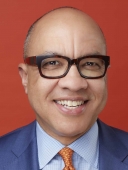 Ford Foundation
Ford Foundation
- President: Darren Walker
- Grant funding in 2017: $652.1 million
- Assets as of year-end 2017: $13.7 billion
- Focus: Across eight decades, the Ford Foundation has sought to reduce poverty and injustice, strengthen democratic values, promote international cooperation, and advance human achievement.
 The William and Flora Hewlett Foundation
The William and Flora Hewlett Foundation
- President: Larry Kramer
- Grant funding in 2017: $407.5 million
- Assets as of year-end 2017: $9.9 billion
- Focus: For more than 50 years, the Hewlett Foundation has supported efforts to advance education for all, preserve the environment, improve lives and livelihoods in developing countries, promote the health and economic well-being of women, support vibrant performing arts, strengthen Bay Area communities, and make the philanthropy sector more effective.
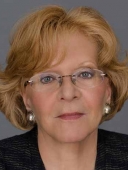 The John D. and Catherine T. MacArthur Foundation
The John D. and Catherine T. MacArthur Foundation
- President (former): Julia Stasch
- Grant funding in 2017: $470.7 million
- Assets as of year-end 2017: $7 billion
- Focus: Over its 40-year history, the MacArthur Foundation has supported creative people, effective institutions, and influential networks building a more just, verdant, and peaceful world.
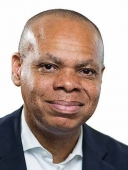 Open Society Foundations
Open Society Foundations
- President: Patrick Gaspard
- Grant funding in 2017: $511.4 million
- Assets as of May 2019: $18 billion
- Focus: The Open Society Foundations are organized as a network of foundations and related entities with 49 offices in 43 countries, all dedicated to a common mission. The Foundations work to build vibrant and tolerant societies whose governments are accountable and open to the participation of all people.
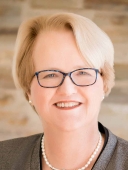 David and Lucile Packard Foundation
David and Lucile Packard Foundation
- President & CEO: Carol Larson
- Grant funding in 2017: $291.8 million
- Assets as of year-end 2017: $7.9 billion
- Focus: The Packard Foundation funds work in the United States and internationally across three program areas: Conservation and Science; Population and Reproductive Health; and Children, Families, and Communities.
Research Hits Home
In January 2016, the Ford Foundation raised its indirect-cost reimbursement rate for many grantees to a minimum of 20 percent and called for “more honest dialogue about the actual operating costs of nonprofit organizations.” To advance that dialogue, The Bridgespan Group examined the financial records of 20 high-profile nonprofits and NGOs to determine their actual indirect costs — those expenses not attributed to a specific program or service.
The results showed that indirect costs made up a much larger percentage of the nonprofits’ total costs than the typical 15 percent fixed-reimbursement rate used by many funders. Actual indirect costs ranged from 21 percent to 89 percent of direct program costs. The shortfall came as no surprise. The real insight came from seeing that different types of nonprofits clearly have different cost structures. Nonprofit research labs, for example, had a median indirect-cost rate of 63 percent, two and a half times the 25 percent median rate of direct-service organizations in our survey. So fixed-rate reimbursement for indirect costs clearly ignored facts on the ground.[22]
In 2017, we expanded our look at grant-making practices by examining the financial health of the 274 most highly cofunded nonprofits of the top 15 U.S. foundations — including the five members of the funder collaborative. The concentration of funding within this limited cohort of grantee organizations indicated their strategic importance among funders: Although representing less than 2 percent of all grantees supported by the funders from 2008 to 2012, the 274 nonprofits received roughly a third of the funding awarded over that period.
Given the prominence of these highly cofunded grantees — many are household names — the results came as a surprise. More than half (53 percent) suffered from frequent or chronic budget deficits, defined as at least two of the past five years. And 40 percent had fewer than three months of reserves (specifically, liquid unrestricted net assets) in the bank to cushion financial shortfalls. In fact, 30 of the 274 organizations showed negative reserves — making them technically insolvent.[23]
More recently, third-party research involving 22 of the five-foundation collaborative grantees reinforced the previous findings. “Among a sample of our own project-restricted grants,” the presidents wrote to their counterparts in the funder community, “grantees’ actual indirect-cost rates exceeded our foundations’ allocations by an average of 17 percentage points.”
The cumulative weight of the research convinced even those who had expressed some skepticism about the severity of the underfunding problem that they must act to address it.
Endnotes
1. The five foundation presidents wanted to share what they had learned with the social sector and turned to The Bridgespan Group to report on the findings of the funder collaborative. Bridgespan participated in the collaborative, served as facilitator, and provided advisory and analytical support. This article reflects the views of the authors and does not intend to speak on behalf of the foundations’ presidents.
2. Underfunding of indirect costs was calculated based on the difference between each pilot grantee’s verified indirect-cost rate and the rate paid by the funder on a recent grant to that organization. Across the sample, the average verified rate was 33 percent, and the average rate paid by funders was 16 percent.
3. Niki Jagpal and Kevin Laskowski, The State of General Operating Support 2011 (Washington, DC: National Committee on Responsive Philanthropy, May 2013).
4. Rick Eden et al., Indirect Costs: A Guide for Foundations and Nonprofit Organizations (Santa Monica, CA: RAND Corporation, 1986).
5. Ann Goggins Gregory and Don Howard, “The Nonprofit Starvation Cycle,” Stanford Social Innovation Review (Fall 2009).
6. Indirect-cost-rate data represents policies as of December 2018 for the 15 largest U.S. foundations by endowment as of 2014 (excluding place-based community foundations).
7. U.S. Office of Management and Budget, “2 CFR 200 — Uniform Administrative Requirements, Cost Principles, and Audit Requirements for Federal Awards,” January 1, 2014.
8. Interviews conducted by Bridgespan in 2017. European Commission, “Financial Guidelines for Applicants,” February 2016.
9. Roger Noll and William Rogerson, “The Economics of University Indirect Cost Reimbursement in Federal Research Grants,” Challenges to Research Universities (Washington, DC: Brookings Institution Press, 1998), 117.
10. GuideStar, BBB Wise Giving Alliance, and Charity Navigator, “The Overhead Myth,” October 2014.
11. Philanthropy California is an initiative of Northern California Grantmakers, Southern California Grantmakers, and San Diego Grantmakers.
12. Philanthropy California and Harder+Company Community Research, Accelerating a Shift Toward Full Cost: A Report on Philanthropy California and Nonprofit Finance Fund’s Full Cost Project for Funders and Nonprofits across the Golden State, November 2018.
13. Jeri Eckhart-Queenan, Michael Etzel, and Sridhar Prasad, "Pay-What-It-Takes Philanthropy," Stanford Social Innovation Review (Summer 2016).
14. Kathleen Kelly Janus, Cheryl Dorsey, Pia Infante, and Robert Ross, “Dismantling Invisible Barriers to Capital,” Stanford Social Innovation Review (February 26, 2019).
15. Susan Taylor Batten and Nat Chioke Williams, “The Case for Funding Black-Led Social Change,” Black Social Change Funders Network, 2017; Edgar Villanueva, Decolonizing Wealth (Oakland, CA: Berrett-Koehler, 2018); Christian Gonzalez-Rivera et al., Funding the New Majority: Philanthropic Investment in Minority-Led Nonprofits (Oakland, CA: Greenlining Institute, 2008).
16. Thomas J. Tierney and Richard Steele, “The Donor-Grantee Trap,” The Bridgespan Group, 2011.
17. Eden et al., Indirect Costs: A Guide.
18. Clara Miller, “Hidden in Plain Sight, Understanding Nonprofit Capital Structure,” The Nonprofit Quarterly (Spring 2003); Kennard Wing and Mark A. Hager, “Getting What We Pay For: Low Overhead Limits Nonprofit Effectiveness” (Washington, DC: Urban Institute, August 2004).
19. For the presidents, paying fair share is fundamentally a matter of achieving transparency and mutual understanding between grantor and grantee around the actual costs to execute a project. Only with an accurate picture of costs can a funder ensure that a grantee’s actual expenses are covered in some way. In the field of joint cost accounting, the concept of fair share refers to the equitable allocation of shared expenses across funders, thereby preventing “free riders,” funders that pass on part of their cost burden to others.
20. Kathy Reich, “Reflections on the First Year of BUILD,” Ford Foundation, November 28, 2018.
21. The third-party indirect-cost rate verification pilot was conducted in 2018 by Bridgespan, BDO, FMA, Humentum, and the funder collaborative foundations.
22. Eckhart-Queenan et al., “Pay-What-It-Takes Philanthropy.”
23. Michael Etzel and Hilary Pennington, “Time to Reboot Grantmaking,” Stanford Social Innovation Review (June 27, 2017).

